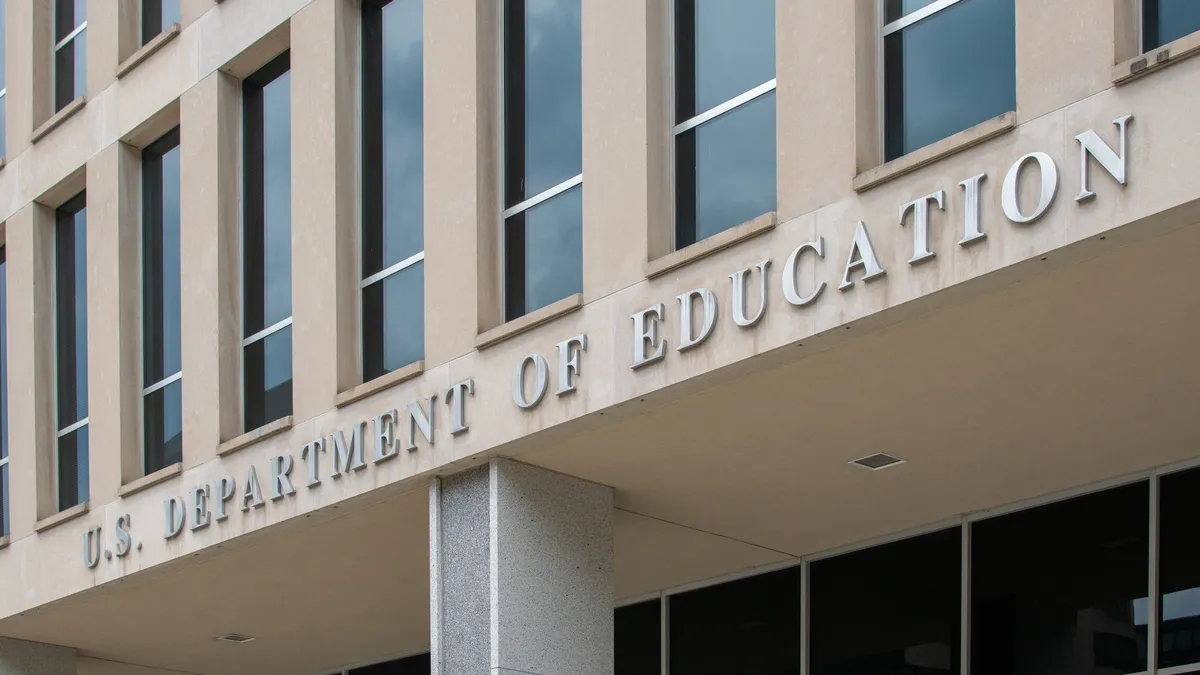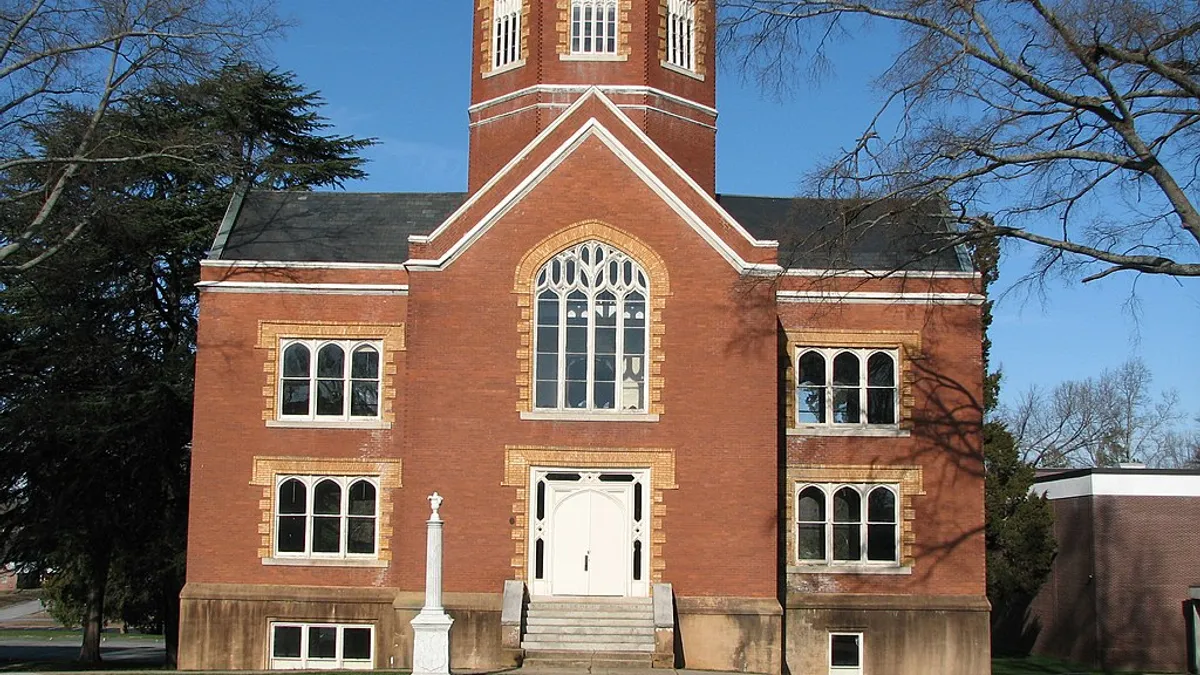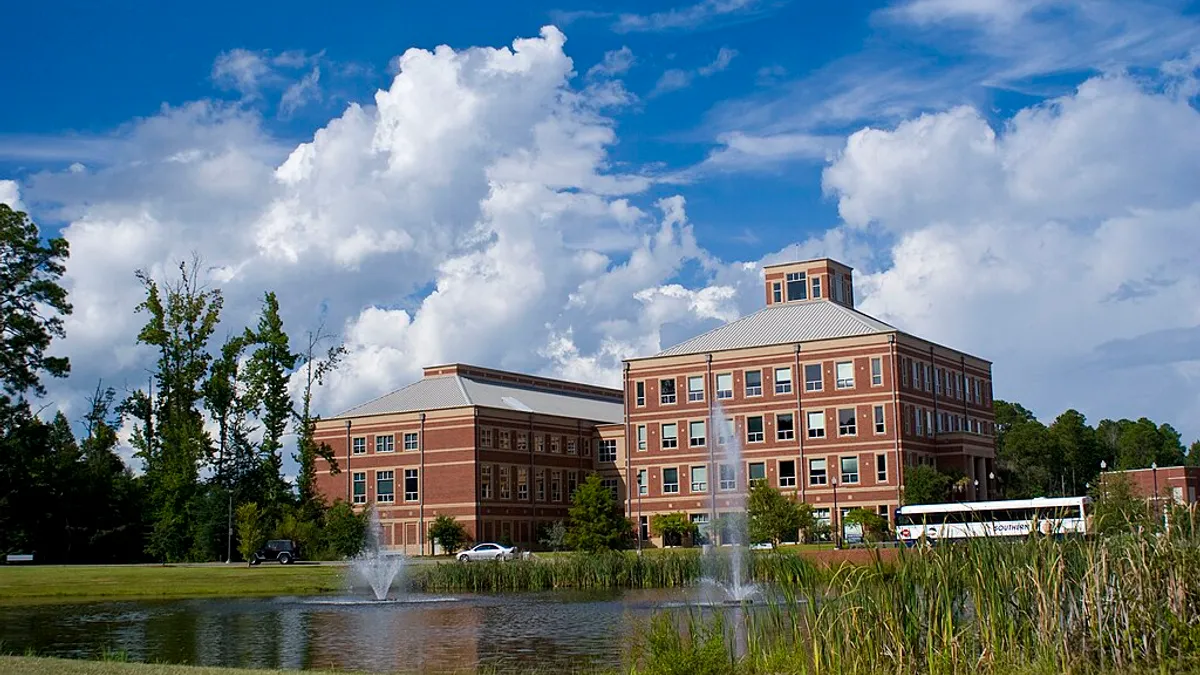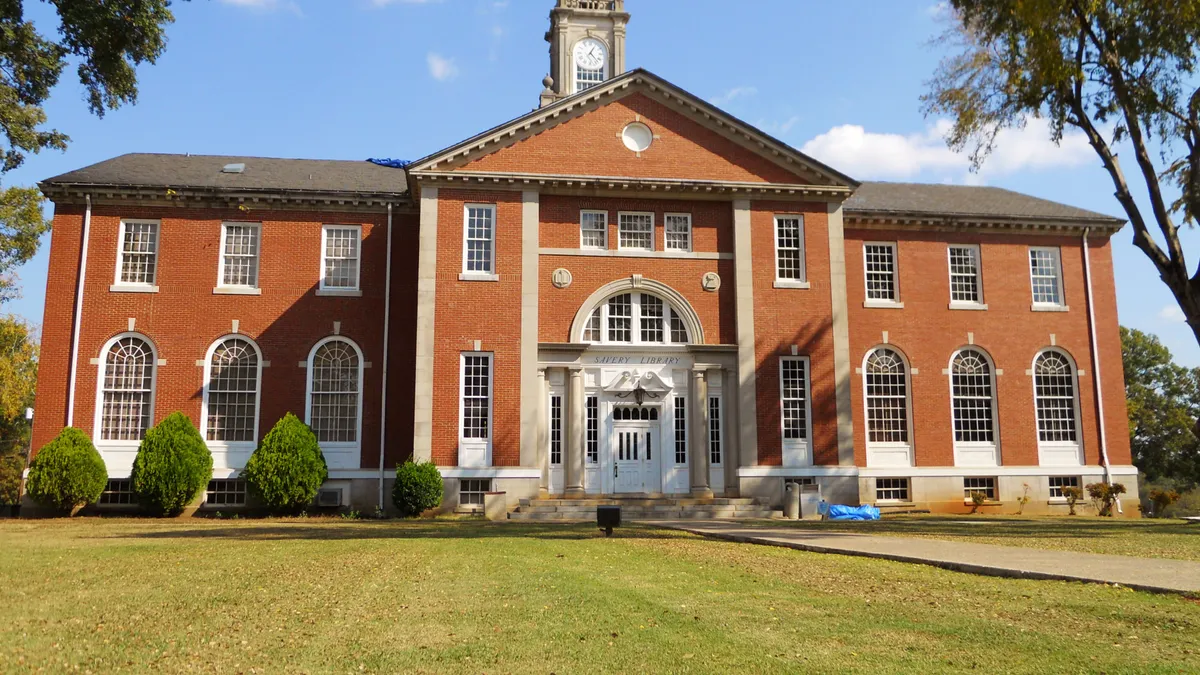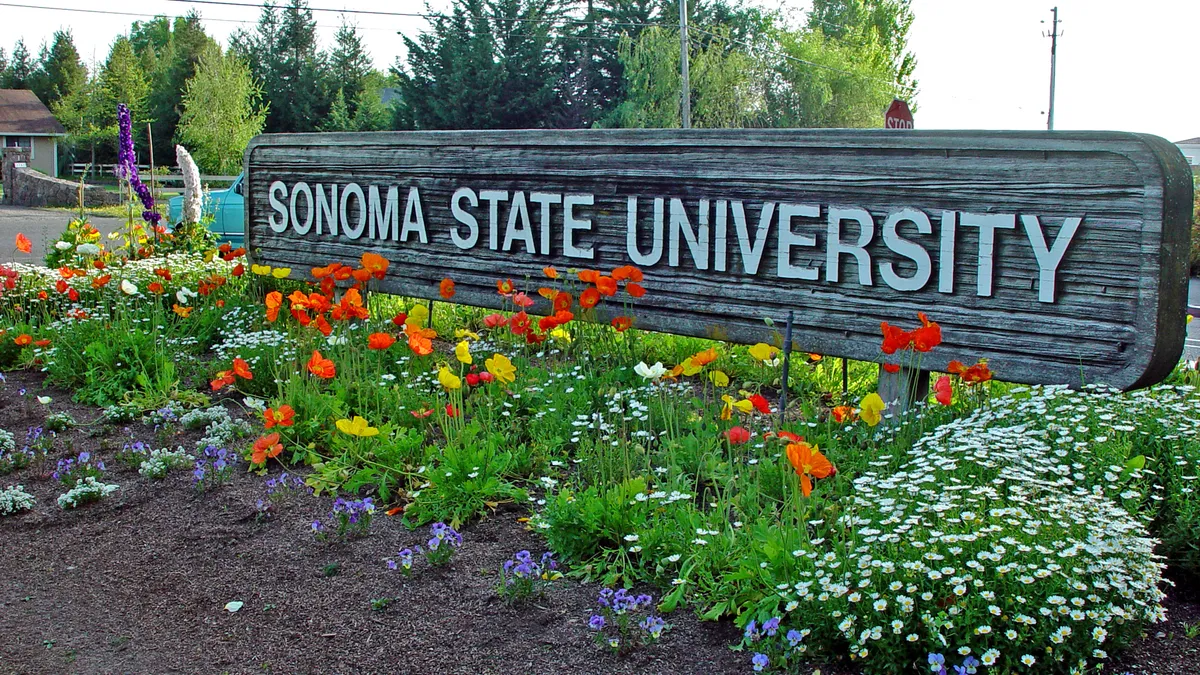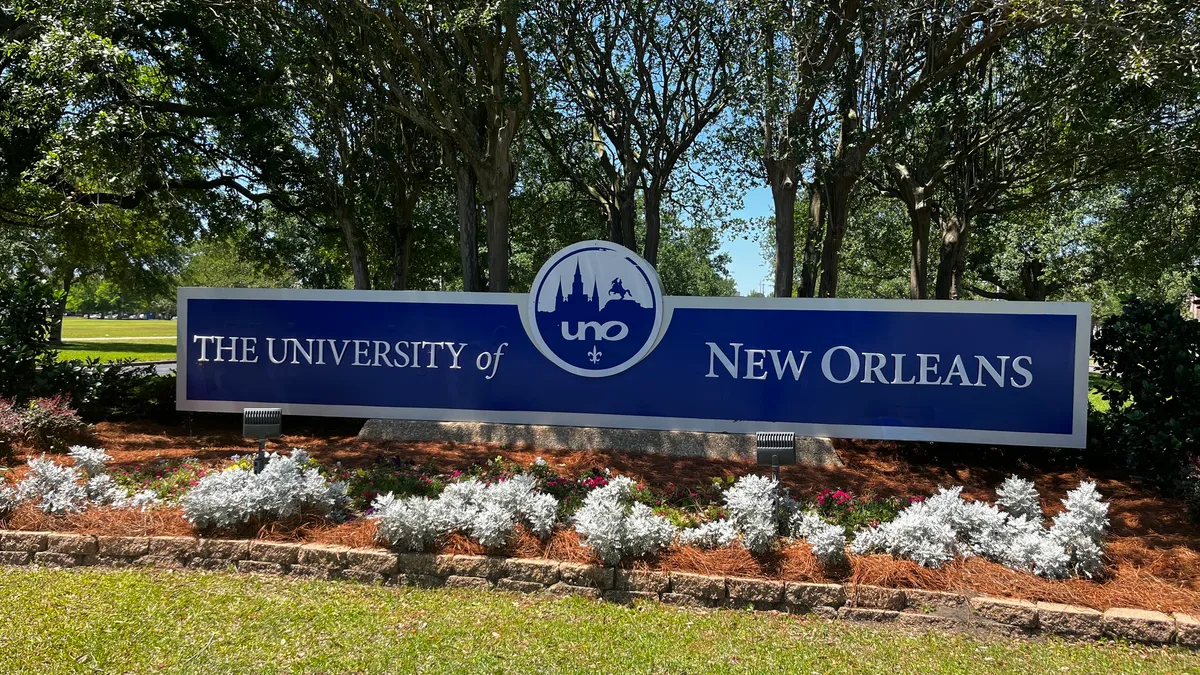Editor’s note: The National Student Clearinghouse Research Center announced Jan. 13 that a methodology error led to incorrect figures for first-year students in its preliminary enrollment data for fall 2024. Further research from the clearinghouse shows that first-year enrollment increased.
Higher education news tends to be a mixed bag, and the most recent enrollment report from the National Student Clearinghouse Research Center is no exception.
Last week, the clearinghouse released preliminary findings for fall 2024 and found that undergraduate enrollment rose 3% compared with early data from last year. On the other hand, it showed enrollment among first-year students dropped 5% compared with the year before, the first decline since the drop at the start of the pandemic.
The youngest adults, 18-year-olds, drove a majority of the decrease, according to the clearinghouse. Its researchers used this group as a proxy for students who enroll in postsecondary education directly after they graduate high school, it said.
Higher education experts said the early data can offer college officials insight into potentially troubling enrollment trends, and some tied the decline in first-year students to the botched rollout of the Free Application for Federal Student Aid. But incomplete data has limitations, and the higher education sector won't have a complete picture of this term's enrollment until final data is released in January.
By then, the 2025-26 FAFSA cycle should already be weeks underway.
Which colleges got hit hardest?
The fall 2024 term marked the first time the clearinghouse broke down colleges by the percentage of Pell Grant recipients they enrolled. First-year enrollment declined most severely at four-year colleges that serve high shares of those students, researchers found.
At both private nonprofit and public four-year institutions, the number of first-year students dropped by more than 10% year over year.
One four-year institution, Northern Illinois University, has blamed a decline in first-year enrollment on the botched rollout of the new FAFSA.
Sol Jensen, Northern Illinois' vice president for enrollment management, marketing and communications, said in a statement last month that the public institution saw a “lower number of FAFSA form completions among prospective freshmen.”
“NIU was likely impacted more than most other universities because we traditionally enroll many students from underserved populations, such as lower-income and/or first-generation college students,” Jensen said.
Other data suggests financial concerns may have influenced college decision-making. At both private nonprofit and public four-year universities, first-year enrollment declines were less severe among part-time students than those attending full time.
Doug Shapiro, the research center’s executive director, posited that younger first-year students may have opted to enroll part time to accommodate more work hours if they were concerned about cost and financial aid.
Community colleges served as a bright spot amid the news, Shapiro said Tuesday during a panel hosted by the National College Attainment Network.
First-year enrollment rose 1.2% at community colleges serving high shares of undergraduates with Pell Grants. Community colleges were also the only type of institution that saw growth in first-year students attending full time.
While the clearinghouse's data is still preliminary, Shapiro noted the sample size is big — representing just over half of Title IV colleges that report to the clearinghouse and almost 9 million students.
Researchers have also not found "any obvious biases" in the sample, except for a small underrepresentation of for-profit institutions.
But when the clearinghouse's data first circulated earlier this month, an official at the U.S. Department of Education noted that the early enrollment data last year produced different results from its complete dataset.
In October 2023, clearinghouse researchers initially estimated that first-year enrollment had declined by 3.6%. When researchers published the final results, in January, they found it instead ticked up 0.8%.
FAFSA ripple effects
Multiple factors in higher education converged this year that potentially disrupted the 2023-2024 application cycle. But the decline in enrollment among recent high school graduates is most strongly correlated with the delay- and glitch-plagued rollout of the new FAFSA, according to Bill DeBaun, NCAN's senior director of data and strategic initiatives.
Two scathing September reports from the U.S. Government Accountability Office found the Education Department fumbled crucial aspects of the FAFSA rollout. For example, the office found 74% of calls to the Education Department’s call centers went unanswered during the first five months of the FAFSA application cycle.
As of Oct. 18, roughly 210,000 fewer members of the high school class of 2024 completed the FAFSA compared with the same time last year, a 8.8% decrease. At the end of June — the month by which most prospective students complete the form in a typical year — the decline was bigger still, down by about 251,000 students or 11.6%, DeBaun said in an interview Wednesday.
When students miss that immediate transition from high school to college, their likelihood of going back later and their long-run likelihood of attaining a degree or credential both shrink dramatically.

Bill DeBaun
Senior director of data and strategic initiatives at the National College Attainment Network
"We're talking about hundreds of thousands of high school seniors — 18-year-olds — who we would have otherwise expected to matriculate not doing so," he said.
The decline in first-year students represents the realization of "the biggest concern with the rollout of the FAFSA last year," according to Katharine Meyer, a governance fellow at the Brookings Institution' Brown Center on Education Policy. In contrast, oft-discussed forces in higher education, including the U.S. Supreme Court's ban on race-conscious admissions and a broader discussion on the value of college, are unlikely to solely explain the decrease, she said in a report Monday.
In recent years, fluctuations in FAFSA completion rates have matched how enrollment has fared the following fall, according to DeBaun. The clearinghouse's findings would have been more remarkable if enrollment among 18-year-olds had gone up, he said.
Whatever the cause behind the decline of first-year students, the consequences are likely to be far-reaching, DeBaun said.
“When students miss that immediate transition from high school to college, their likelihood of going back later and their long-run likelihood of attaining a degree or credential both shrink dramatically," he said.
The Education Department weighs in
Earlier this month, the Education Department released its own early financial data in tandem with the clearinghouse's report.
The number of students set to receive federal aid this year rose 3% compared with the same time last year, the agency found. Based on Pell Grant originations — a key step colleges must take before they can distribute aid — about 10% more students are on track to get Pell funding, including a 3% bump in high school seniors.
DeBaun lauded any increase in Pell availability. However, he also expressed interest in seeing the grant dispersal rates — not just originations — amid the higher demand now that the fall 2024 semester is well underway.
In the post, the Education Department also said that "many two- and four-year colleges are reporting enrollment increases this fall."
At the time, a department official said in a statement that warnings of large-scale enrollment declines wouldn’t become reality.
The biggest priority moving forward, higher education experts say, is avoiding a repeat of delays and glitches during the 2025-26 aid cycle.
The FAFSA must launch with full functionality by the start of December, said Kim Cook, CEO of NCAN.
"While that's still a delayed opening of two months, we believe the difficult trade-off of waiting for full functionality will produce better outcomes for students to receive aid offers in time to support fall enrollment," Cook said during Tuesday's panel.
Meyer expressed a similar sentiment in her Monday report.
"Let’s all hope the Department has taken GAO recommendations to heart and after the current beta testing phase will deliver a fully functional form, so the enrollment declines this year don’t repeat for the high school class of 2025," she wrote.





